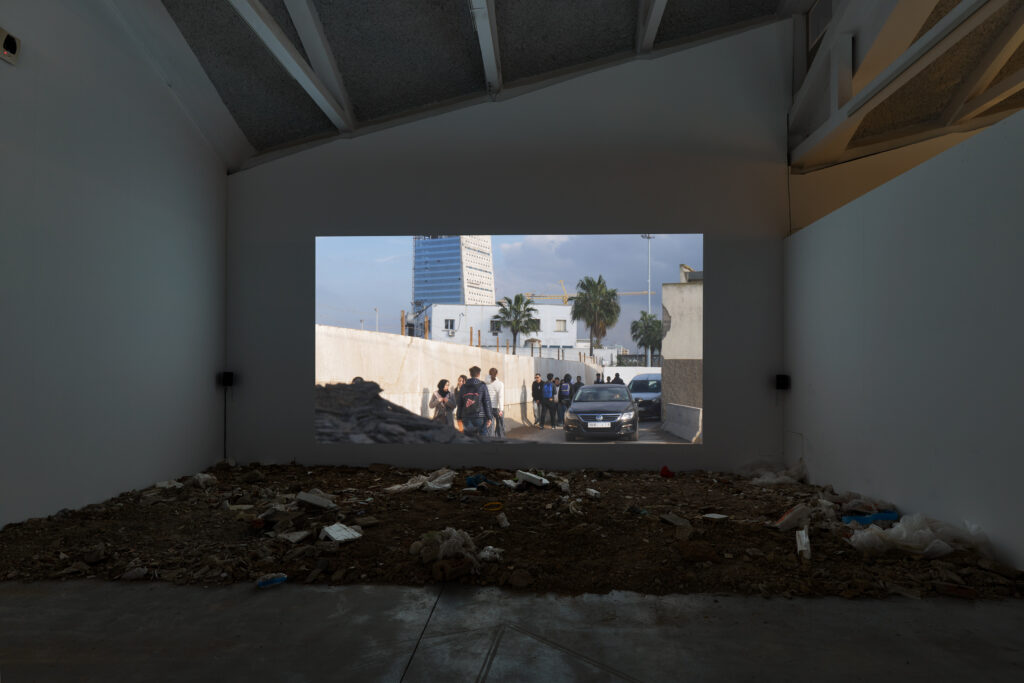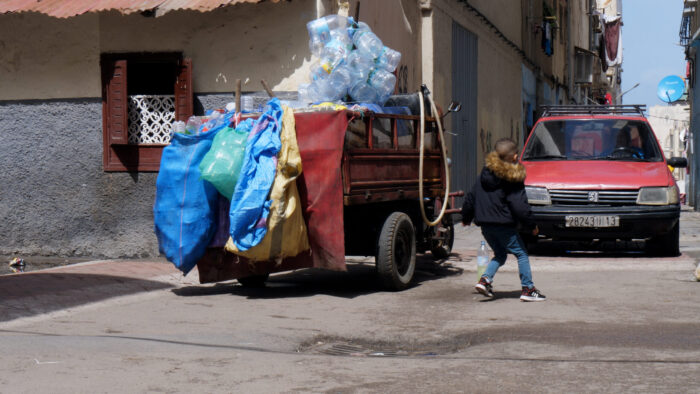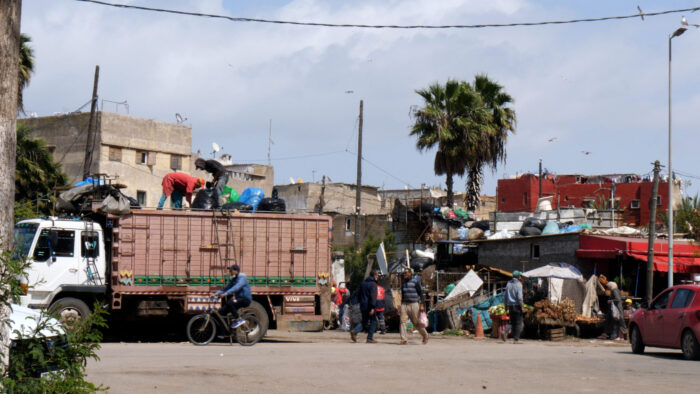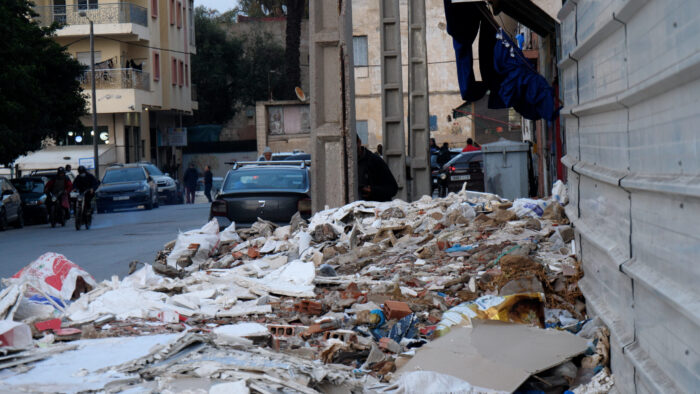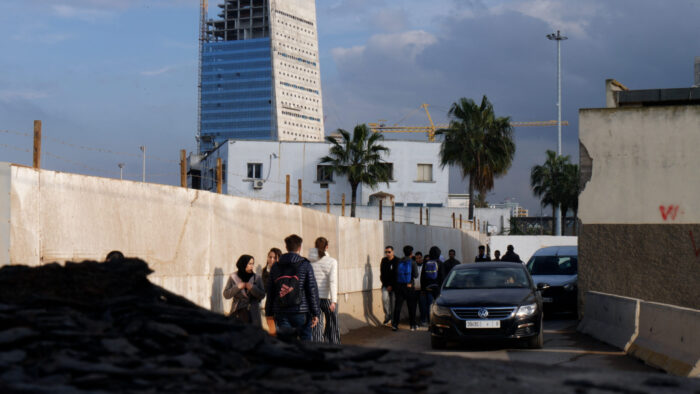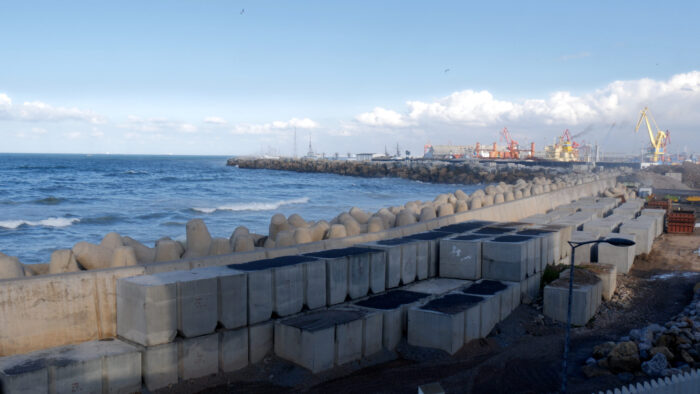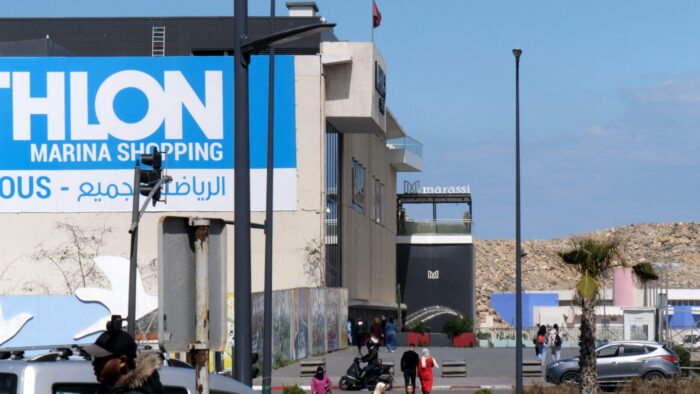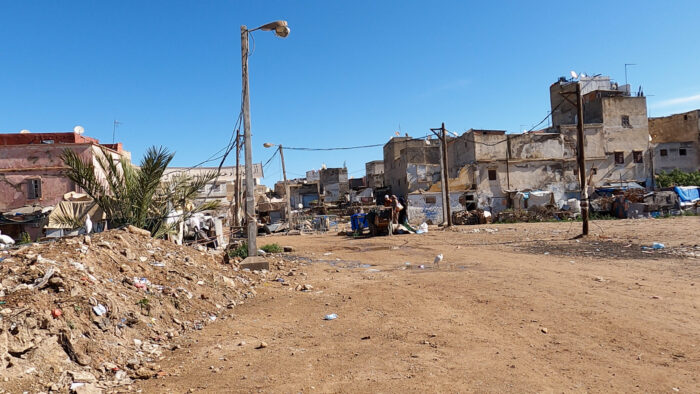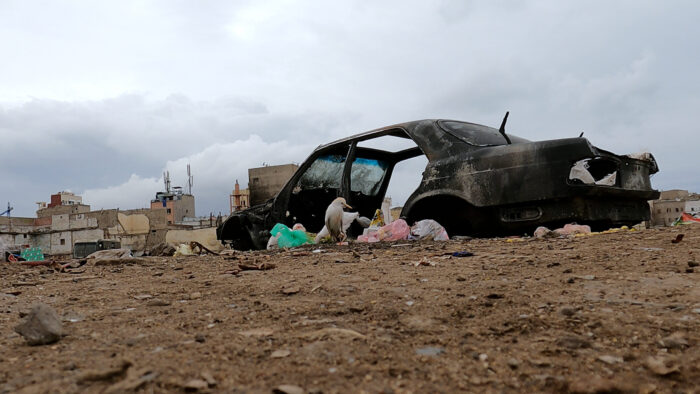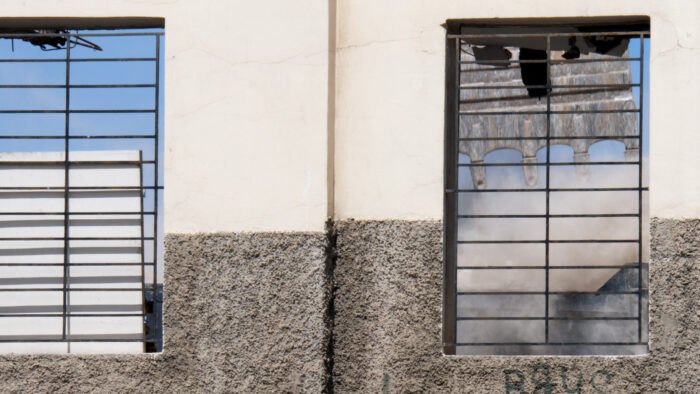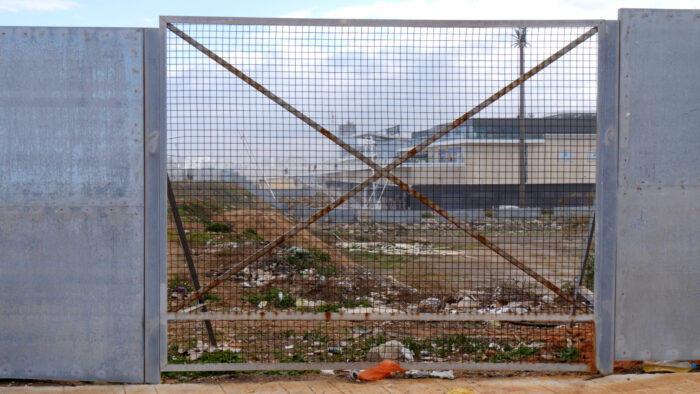A film by Oliver Ressler
4K, 28 min, AT/CH/MA 2022
The film discusses two areas in Casablanca where major infrastructure projects have caused social upheaval on a huge scale.
The first of these projects is now almost complete: directly in front of the Medina – the old city with its narrow streets and small shops – a massive kilometer-long seawall was built, cutting inhabitants off from the sea. A new urban panorama of concrete and glass was then built on top of the seawall, dominated by the shopping mall Casablanca Marina.
The beach from which locals once fished has disappeared entirely, replaced by a wall of concrete. The enclosure of the seashore means even the view of the sea has come to be controlled and confined by private capital.
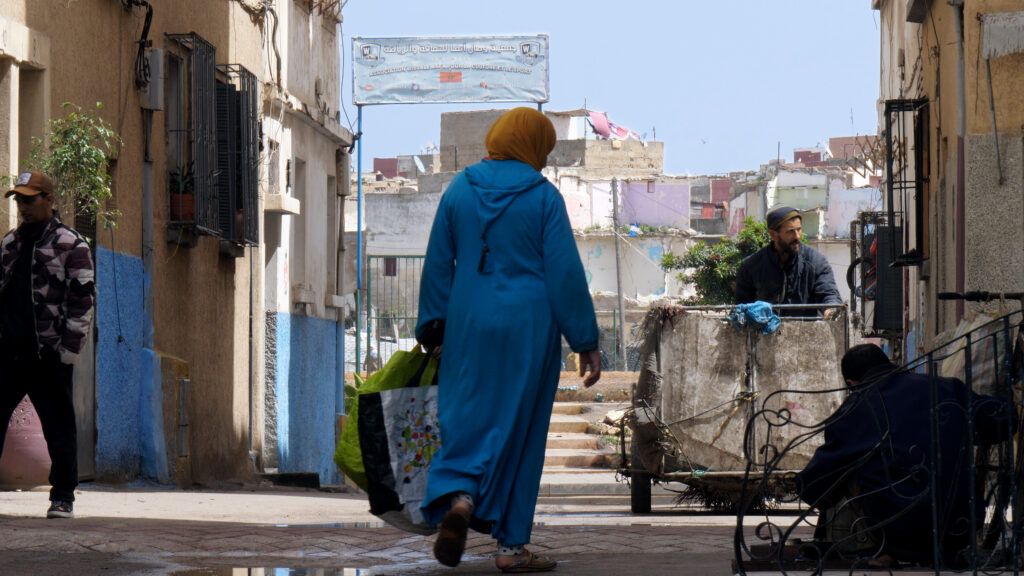
The second urban development scheme is located within sight of the Hassan 2 Mosque, Africa’s largest mosque since its completion in 1993. The neighborhood chosen for Projet de D’Avenue Royale consists of low-income and collapsed houses, some in the process of demolition. In the midst of the debris, evicted residents live in tents and self-built shanties without running water or electricity. Many of these people can’t afford or don’t want to move to the outskirts of this city of 4 million inhabitants, far from their informal jobs and local survival networks. The outcome of their ongoing struggles will reveal whether the government was indeed able to impose yet another capital-friendly international showcase, reproducing a wider geography of inequality.
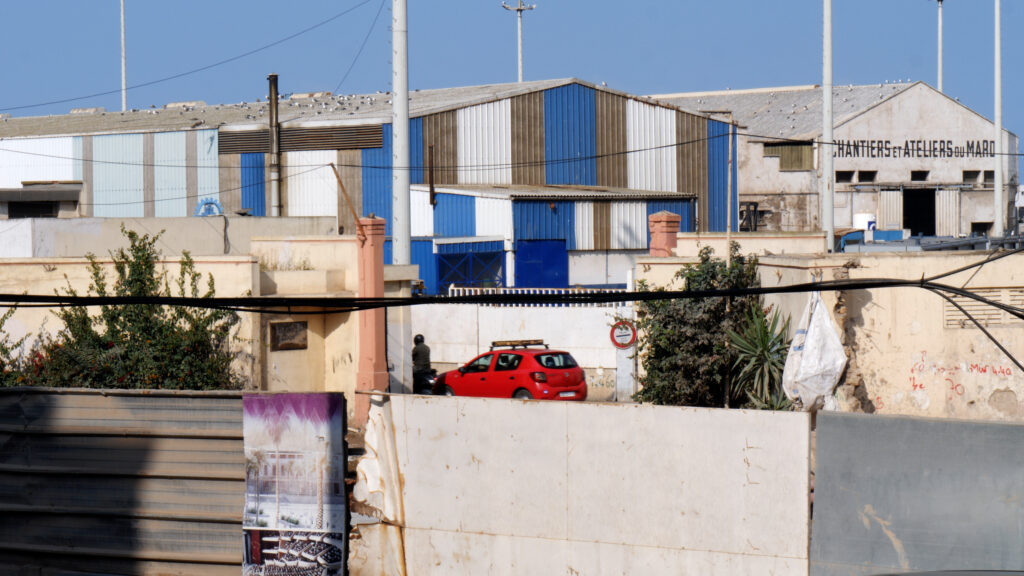
Both megaprojects express the same logic: urban space is reshaped by the logic of the market, not by the needs of residents. Since Morocco cannot rely on abundant natural resources, major cities are converted into growth engines of the national economy. The city itself becomes a site of extraction and driver of profit.
Rather than the spectacular visual showpieces of an open, globalized, and market-friendly Morocco, the megaprojects should be seen for what they are: instances of an authoritarian transformation that re-institutionalizes, reassembles, and redeploys state power.
“After the Barrage, the Deluge” (Après le barrage, le déluge) insists on the potential of opposition, taking the wrecker-king Louis XV (“Après moi, le deluge”) at his word. A wall built to repel the sea and expel the poor – a barrage in the double sense of onslaught and barricade – can always be overwhelmed by the flood-tides of social struggle.
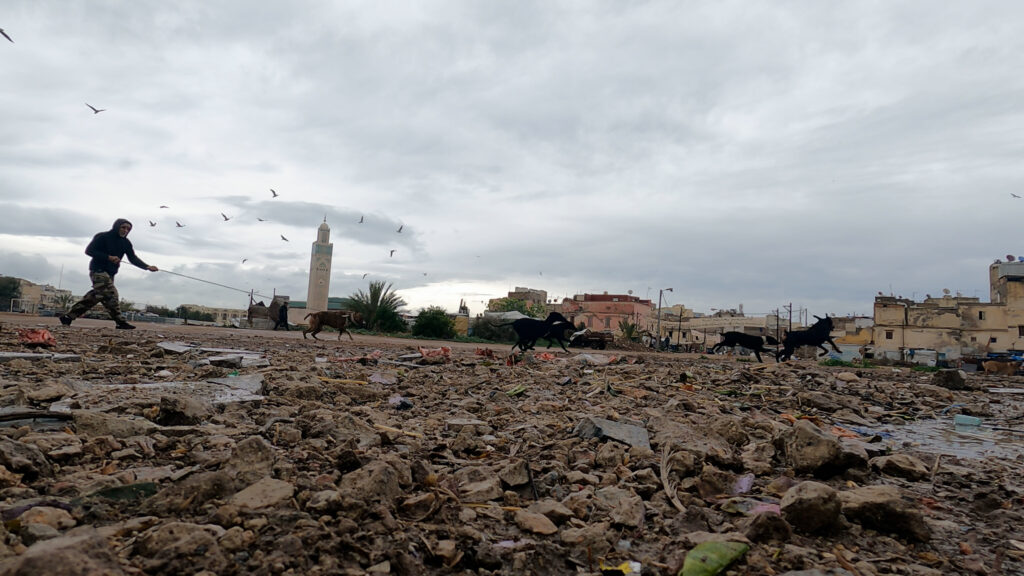
Director and producer: Oliver Ressler
Speakers (in the order of appearance): Resident Avenue Royale 1, Samba Soumbounou, Omar Radi, Rita Quassar, Ghassan Wail, Fatim Zahra Benhamza, Resident Avenue Royale 2, Resident Avenue Royale 3, Hicham Houdaïfa, Omar Radi
Cinematography, audio recording: Oliver Ressler
Editing: Janina Herhoffer, Oliver Ressler
Color correction: Rudolf Gottsberger
Sound and sound design: Vinzenz Schwab
Title design: Nils Olger
Translations: Imad Dahmani, Sabrina Kamili, Selma Naguib, Abdeslam Ziou Ziou
The project was commissioned by 5th Biennale Internationale de Casablanca, curated by Christine Eyene, and received support from Phileas: The Austrian Office for Contemporary Art; BMKOES: The Austrian Ministry of the Arts, Culture, the Civil Service and Sport; and Gwärtler Stiftung.
Special thanks to Christine Eyene for supporting the project in all its stages. Furthermore, I would like to thank Soukaina Aboulaoula, Yto Barrada, Fatim Zahra Benhamza, Koenraad Bogaert, Christine Eyene, Matthew Hyland, Hasna Jabir, Sabrina Kamili, Lisbeth Kovačič, Aline Lenzhofer, Selma Naguib, Abdeslam Ziou Ziou.
